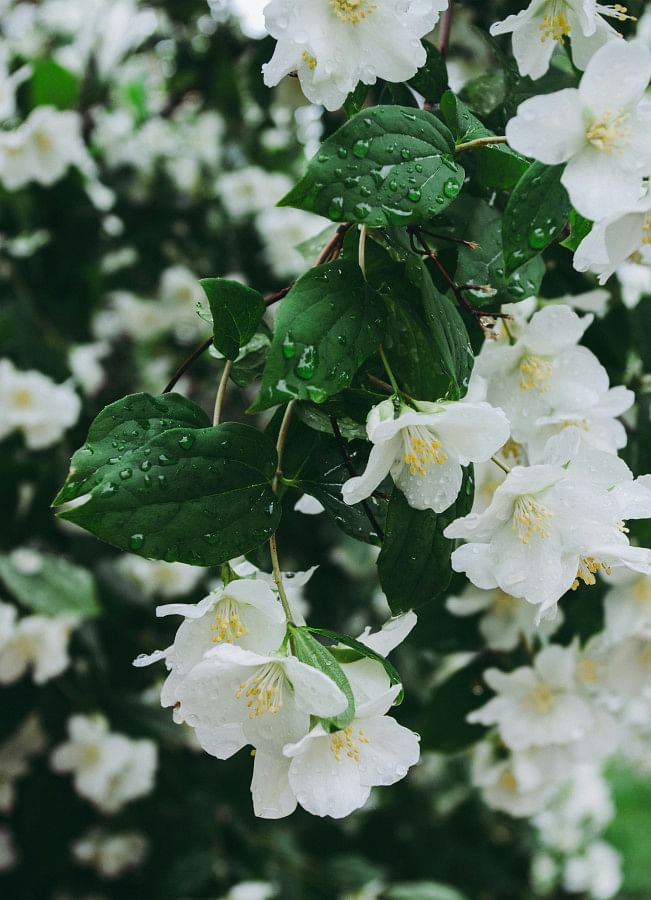As 2024 rolls into its second month, we start preparing for the change of weather. Stash your woollies back into the cupboard and bring out your colourful wear as our wardrobes and dinner tables will be a blast of hues and tastes.
Falgun arrives in a flurry of yellow and I am pleased to share some popular Bengali recipes, in collaboration with Joyadrita Ragavendran Chatterjee, who shares her family specials from West Bengal.
A people of six seasons, Bengali cuisine rightly revolves around the change of weather, and consuming flowers is a popular cultural norm. Falgun arrives with the start of this flower-consuming part of the year and we see shojne or drumstick flowers mostly grace our urban kitchens.
There are several other flowers that many consume outside Dhaka or those who have access to vegetables from their ancestral homes. Mostly, these flowers are revered for their medicinal purposes, a practice Joyadrita also acknowledges as she shares her family recipes with us.

Joyadrita Ragavendran Chatterjee says, "The use of Falgun flowers or the edible flowers that are specifically harvested for their medicinal purposes is common from February until March end. Some of the commonly used flowers during this time are shojne phool (drumstick flowers), jukti phool (green milkweed climber), and neem phool. All of these featured some way or the other in our menu during this time."
SHOJNE PHOOL-ALOO BORI DIYE TORKARI
Ingredients
Bori or sundried lentil dumplings fried, and kept aside
2 potatoes cut into medium cubes
Drumstick flowers washed (about 1-1½ cup)
Panchphoron for tempering
Mustard oil
Salt and sugar to taste
Turmeric powder
Green chillies
Mustard oil
Method
Heat oil in a wok, temper with panchphoron, and add the potatoes and the flowers. Add in all the spices. Mix everything well until oil separates, add water and let them get cooked. Finish off with the fried bori. Make sure there is enough gravy. Serve hot with rice.

JUKTI PHOOL-ALOO DAATA-BEGUN DIYE TORKARI
Ingredients
1½ cups jukti phool
Salt and sugar to taste
A pinch of turmeric powder
2-3 green chillies
2 potatoes, diced
1 eggplant/brinjal, diced
1 cup tender drumsticks
Mustard oil
Panchphoron, to temper
Method
Heat oil in a wok, temper with panchphoron, and add all the ingredients followed by the spices. Mix everything well until the oil separates. Add water and let it all get cooked. The curry should finally be mushy. Serve hot with rice.
NEEM PHOOL SHUKTO
Ingredients
Neem flowers
Mixed vegetables cut into long, thick strips (potatoes, sweet potatoes, raw papaya, eggplant, and raw banana)
Tender drumsticks
Bori or sundried lentil dumplings, fried
Salt and sugar, to taste
1 cup milk
Ginger-mustard paste
1 tsp ghee and mustard oil
Mustard seeds, for tempering
Method
Fry the neem flowers and keep aside, in the same oil, add all the vegetables (hard ones go first), and mix everything. Cover for 2-3 minutes. Once they soften slightly, add in the ginger-mustard paste along with salt and sugar. Mix it all up so that the vegetables are coated with the spice mix. Add water and let it get cooked. The vegetables shouldn't break yet before being cooked. Finish off with the needed flowers and ghee on top. Serve hot with rice.

JASMINE AND RICE WITH SEAFOOD (A Fearless Olive Favourite)
Ingredients
1 cup any long-grained rice (basmati or chinigura)
¼ cup jasmine flower stems
100g cleaned shrimp (ideally tiger shrimp or bagda)
½ cup chicken stock
¼ cup coconut milk
2-3 Kefir lime leaves
1 stem of lemon grass
1 tsp diced garlic
¼ cup diced onion
1 tbs diced spring onions
2 green chillies, sliced in the middle
1 tsp thinly sliced galangal (you can use normal ginger)
A pinch of cumin powder
Salt and pepper, to taste
Method
Sauté the shrimp with garlic. Boil the rice for about 5 minutes then add all the ingredients but wait for another 2 minutes before adding the jasmine flower stems. Stir and cook the rice like normal basmati (let the water dry out), then lower the heat and let it cook till the rice is finished. Keep stirring so the rice does not stick to the pot. Serve hot with a tamarind chutney.








Comments